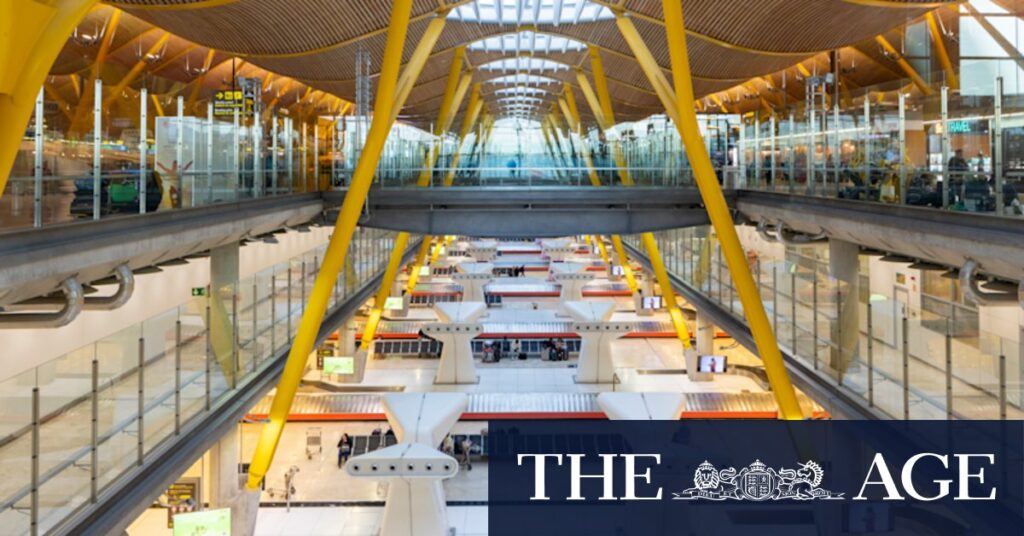
October 16, 2025 — Madrid, Spain — Adolfo Suarez Madrid–Barajas Airport, the second-largest airport in Europe by area, is set for a significant transformation. A €2.4 billion renovation plan is scheduled to commence in 2031, aiming to rejuvenate its tired interiors and enhance passenger experience. This development comes as the airport, despite its architectural accolades, faces criticism for its outdated facilities.
Passengers traveling through Madrid-Barajas often find themselves navigating a mix of architectural beauty and operational shortcomings. While the airport’s Terminal 4 and its satellite terminal T4S, which opened in 2006, are celebrated for their innovative design, the need for modernization is evident. The upcoming facelift is expected to address these issues, promising a more seamless travel experience.
The Journey Through Madrid-Barajas
Travelers arriving at Madrid-Barajas have multiple options for reaching the airport. A budget-friendly airport bus ride costs €5 and takes about half an hour, offering a direct route from central Madrid to the terminals. Alternatively, a taxi from the Madrid-Puerta de Atocha-Almudena Grandes train station costs around €30 ($53.30).
Upon arrival, passengers are greeted by the aesthetically pleasing Terminal 4. However, the airport’s expansive nature often leaves it feeling empty, with limited comfortable waiting areas. Many passengers, like the author, find themselves perched on luggage trolleys, engrossed in books while waiting for check-in counters to open.
Security and Transit Challenges
Security at Madrid-Barajas is deceptively efficient, with minimal wait times. However, travelers on non-Schengen flights must navigate an additional step: a five-minute underground tram ride to Terminal 4S, followed by passport control. This process can surprise those unfamiliar with the layout, especially when pressed for time.
Despite these challenges, the airport staff maintain a calm demeanor, ensuring a swift processing of passengers through passport control. The efficiency of the subway system aids in minimizing transit time between terminals.
Culinary and Retail Offerings
Madrid-Barajas offers a taste of Spain’s culinary delights, with options ranging from jamon iberico to sherry. The airport’s food scene includes popular outlets like Flax & Kale and La Place, alongside the newly launched Hungry Club by celebrity chef Dabiz Munoz. For those seeking familiar comforts, McDonald’s offers a unique gluten-free menu not available in other countries.
Retail therapy at the airport is somewhat limited, with a selection of brands such as Victoria’s Secret and Lacoste in Terminal 4. Terminal 4S provides additional options, including Carolina Herrera and Marc Jacobs, but lacks the premium luxury brands typically found in major airports.
Looking Ahead: The Future of Madrid-Barajas
The planned renovation of Madrid-Barajas Airport is a testament to its commitment to improving passenger experience. As the airport prepares for this transformation, it aims to balance its architectural heritage with modern amenities. The renovation is expected to not only enhance the airport’s functionality but also reaffirm its status as a key European hub.
With fewer passengers and more space than many other airports, Madrid-Barajas offers a less cluttered experience. While it may not yet rival the world’s top airports, its good design and upcoming improvements promise a brighter future for travelers passing through Spain’s capital.
Our rating out of five: ★★★
The author traveled as a guest of Tourism Espana. For more information, visit www.spain.info/en/.
Shaney Hudson is an award-winning freelance travel writer based in Sydney, specializing in family travel and exploring the world’s wild places.







